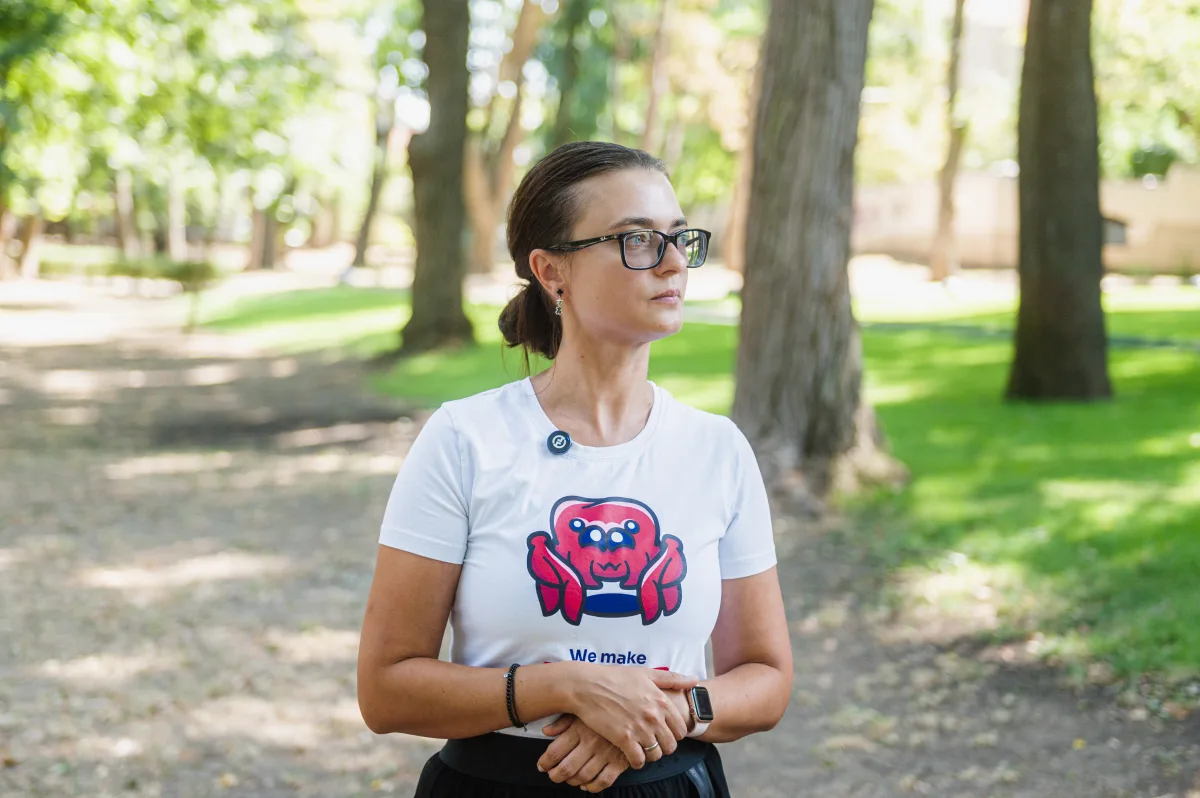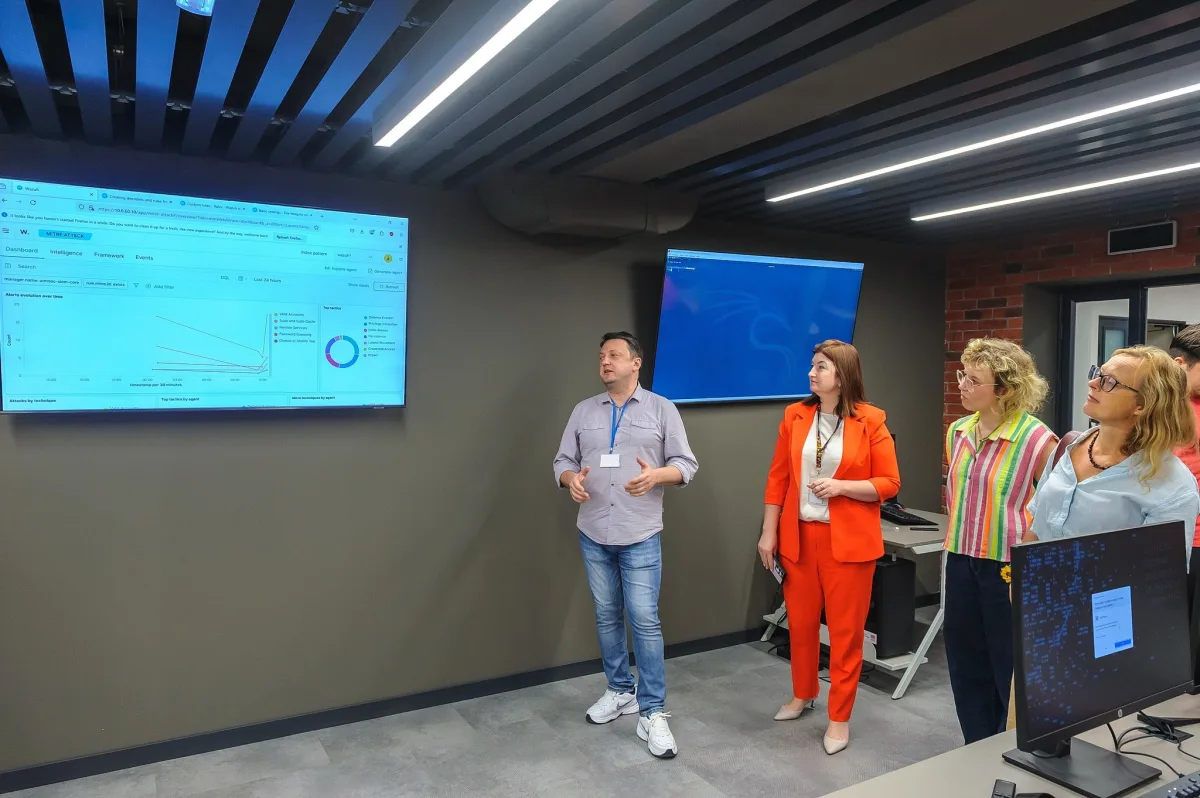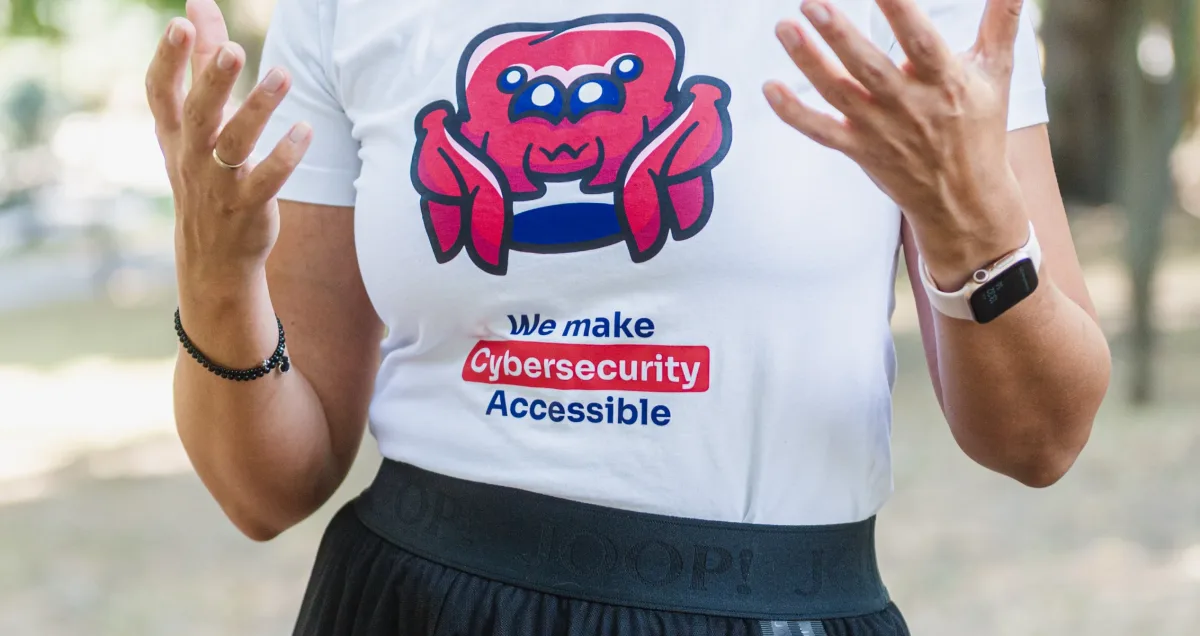At a peaceful café tucked inside a Chișinău park, life feels safe. But invisible threats are everywhere. Aliona Levca, the founder of the Pinky CyberSafe start-up, sees them clearly. She sips a lemonade and tells us that almost any company in any country risks being attacked. She just met some of them, wearing a Pinky-branded T-shirt.
“There is no such thing as being safe online,” she notes. “If something is connected to a website and can be accessed by a client, it can be accessed by a hacker.”
Security for all
Levca knows what it feels like to clean up after a cyberattack. Before founding Pinky CyberSafe, she worked for years abroad and served as a risk consultant for major Moldovan companies. She’s seen how much companies lose in time, reputation, and money because they think cybersecurity is for later.
“The biggest problem is that companies treat cybersecurity as something optional. Especially small ones. What you see in the media is about big companies, but small ones are easy targets. They’re low-hanging fruit,” explains Aliona, referring to the fact that not everyone knows what minimum protection looks like.
A couple of years ago, Levca began building Pinky CyberSafe: an automated platform that scans company infrastructure, detects vulnerabilities, and immediately suggests how to fix them in simple language.
It’s like a virtual Chief Information Security Officer, as Levca puts it.

Her idea inspired others. Pinky CyberSafe was selected for the EU-backed EmpoWomen programme, a competitive deep-tech accelerator supporting women-led start-ups across Europe. It’s now positioning itself as a go-to cybersecurity tool for small businesses in any country.
Women in Moldova make up around 43 per cent of the ICT workforce. It is a figure well above many regional averages. In addition, national programmes such as the 30-million lei (1.5 million euros) Women’s Entrepreneurship Support Programme are helping boost female-led start-ups like Pinky.
Prevention before defence
Moldova’s private sector is still new to cybersecurity. Some companies might not even notice or report attacks. Most of Pinky’s current users are small and medium enterprises that don’t have in-house security teams or IT staff.
After scanning a website or online service, it generates a custom report with severity rankings, suggested actions, and diagrams explaining each vulnerability. “It’s not about scaring people. It’s about making it easy to act,” Levca says. “For a company here in Moldova, we stopped their enormous losses in just five minutes.”
Pinky’s scanning engine runs continuously. Clients receive automatic alerts when new issues arise. In the future, Pinky plans to add smart decoys, or ‘honeypots’: fake targets that attract hackers and keep them away from real company data. “We want to make honeypots easy, self-deployed, with no technical knowledge needed,” Levca says.
From software to strategy
The systematic attitude in cybersecurity was exactly what a Romanian software entrepreneur, Marius Dumitrașcu, sought to empower in Moldova. With nearly two decades of experience, Marius is a managing director at Codwer, a global tech company.
Now, he is also the head of research and training at CyberCor, Moldova’s national cybersecurity institute. CyberCor launched Moldova’s first national educational cyber platform at CyberCon in 2024. Its students are already representing Moldova in international training programmes, including a summer school in Estonia alongside peers from the US and Singapore.

“I arrived without a laptop, without plans to work,” Dumitrașcu confesses. “Just to relax with friends,” he recalls. But the people, the pace, and the underused potential pulled him in. He began teaching at the Technical University of Moldova and saw a gap: students needed more hands-on training in cybersecurity.
“They knew how to answer theoretical questions, but not what to do when a ransomware alert popped up on a live system. But the core governmental infrastructure in Moldova is great. Moldova has one of the best digitalization programs in the government. I’d say it’s above Estonian,” says Marius. Thus, the mismatch between curriculum and crisis became one of CyberCor’s core missions.
“Instead of theory, we let students touch the wires;” Marius points out.
How does Moldova defend itself?
In a country where much of the digital security infrastructure is still emerging, solutions like Pinky and initiatives like CyberCor are doing more than patching technical gaps. They are shaping public perception and are part of a bigger picture.
Moldova’s cyber defence isn’t just up to volunteers and start-ups.
In 2023, the country passed its first cybersecurity law and set up a new agency to protect key systems. The E-Governance Agency runs the government’s online services.
“You can move fast here. You have access to people. If you have a good idea, and you’re serious, things happen,” notes Levca.
Still, the system remains fragile, but not unprepared. As Dumitrașcu puts it: “We’re dealing with a space that wasn’t taken seriously for a long time. Things are changing slowly. In terms of digitalisation, Moldova is one step ahead of other countries in the region.”
Levca notes increased interest from public institutions. “There’s openness. Sometimes the bureaucracy is slow, but people are listening.”
Despite challenges, Levca emphasises the importance of this phase in Moldova’s evolution. “We’re in that in-between moment. Not a blank page anymore, but not a full one either. It’s an opportunity to do it right before habits form, before things get rigid.”
Photo: By & © Iurie Gandrabura.







